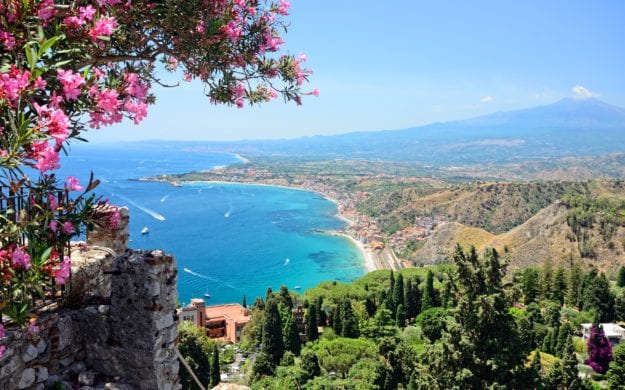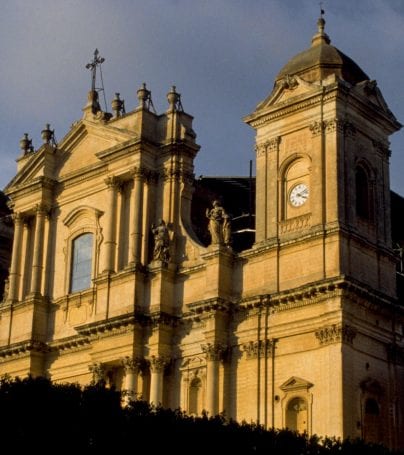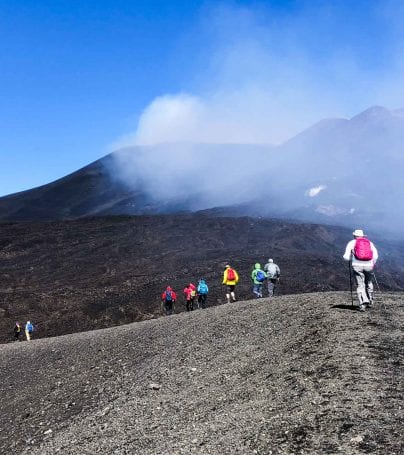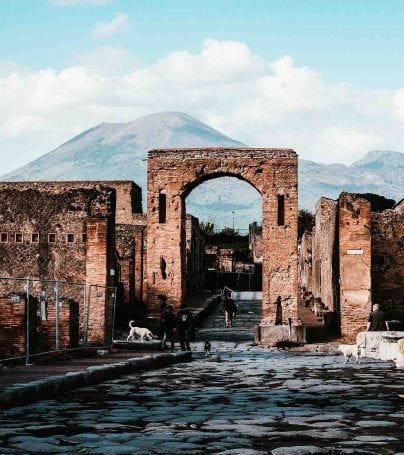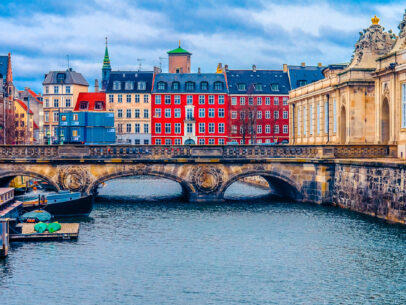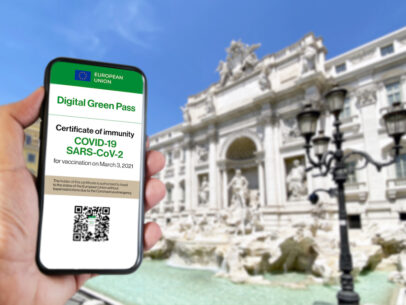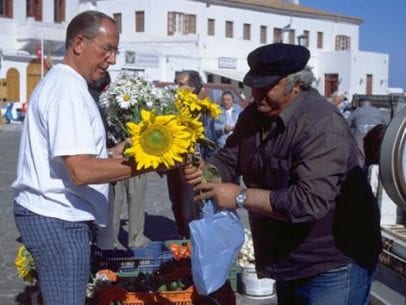Syracuse Adventure Tours
Syracuse (Italian Siracusa, Sicilian Sarausa, Latin Syracusae) is an Italian city on the eastern coast of Sicily and the capital of the province of Syracuse. Once described by Cicero as “the greatest Greek city and the most beautiful of them all”, the ancient core of Syracuse is part of the UNESCO World Heritage List.
Modern Syracuse
The city in the following centuries was struck by two ruinous earthquakes in 1542 and 1693, and, in 1729, by a plague. The 17th century destruction changed forever the appearance of Syracuse, as well as the entire Val di Noto, whose cities were rebuilt along the typical lines of Sicilian Baroque, considered one of the most typical expressions of art of Southern Italy. The spread of cholera in 1837 led to a revolt against the Bourbon government. The punishment was the move of the province capital seat to Noto, but the unrest had not been totally choked, as the Siracusani took part to the 1848 revolution.
After the Unification of Italy of 1865, Syracuse regained its status of provincial capital. In 1870 the walls were demolished and a bridge connecting the mainland to Ortygia island was built. In the following year a railway link was constructed.
Heavy destruction was caused by the Allied and the German bombings in 1943. After the end of World War II the northern quarters of Syracuse experienced a heavy, often chaotic, expansion, favoured by the quick process of industrialization.
Syracuse today has about 125,000 inhabitants and numerous attractions for the visitor interested in historical sites (such as the Ear of Dionysius). A process of recovering and restoring the historical centre has been ongoing since the 1990s. Nearby places of note include Catania, Noto, Modica and Ragusa.
Ancient Buildings
- The Temple of Apollo, adapted to a church in Byzantine times and to a mosque under Arab rule.
- The Fountain of Arethusa, in the Ortygia island. According to a legend, the nymph Arethusa, hunted by Alpheus, took shelter here.
- The Theatre, whose cavea is one of the largest ever built by the ancient Greeks: it has 67 rows, divided into 9 sections with 8 aisles. Only traces of the scene and the orchestra remain. The edifice (still used today) was modified by the Romans, who adapted it to their different style of spectacles, including also circus games. Near the theatre are the latomìe, stone quarries, also used as prisons in ancient times. The most famous latomìa is the Orecchio di Dionisio (“Ear of Dionysius”).
- The Roman amphitheatre, of Roman Imperial age. It was partly carved out from the rock. In the centre of the area is a rectangular space which was used for the scenic machinery.
- The so-called Tomb of Archimede, in the Grotticelli Nechropolis. Decorated with two Doric columns, it was a Roman tomb.
- The Temple of Olympian Zeus, about 3 km outside the city, built around 6th century BC.
Churches
- The Cathedral was built by bishop Zosimo in the 7th century over the great Temple of Athens (5th century BC), on the Ortygia island. This was a Doric edifice with 6 columns on the short sides and 14 on the long ones: these can still be seen incorporated in the walls of the current church. The base of the Greek edifice had three steps. The interior of the church has a nave and two aisles. The roof of the nave is from Norman times, as well as the mosaics in the apses. The façade was rebuilt by Andrea Palma in 1725-1753, with a double order of Corinthian columns, and statues by Ignazio Marabitti. The most interesting artipieces of the interior are a font with marble basin (12th-13th century), a silver statue of St. Lucy by Pietro Rizzo (1599), a ciborium by Luigi Vanvitelli, and a statue of the Madonna della Neve (“Madonna of the Snow”, 1512) by Antonello Gagini.
- Basilica of Santa Lucia extra Moenia, a Byzantine church built, according to tradition, in the same place of the martyrdom of the saint in 303 AD. The current appearance is from the 15th-16th centuries. The most ancient parts still preserved include the portal, the three half-circular apses and the first two orders of the belfry. Under the church are the Catacombs of St. Lucy.
- Church of San Paolo (18th century).
- Church of San Cristoforo (14th century, rebuilt in the 18th century).
- Church of Santa Lucìa alla Badìa, a Baroque edifice built after the 1693 earthquake.
- Church of Santa Maria dei Miracoli (13th century).
- Church of the Spirito Santo (18th century).
- Church of the Jesuite College, a majestic, Baroque building.
- Church of St. Benedict (16th century, restored after 1693). It houses a painting of the Death of Saint Benedict by the Caravaggisti Mario Minniti.
- Chiesa della Concezione (14th century, rebuilt in the 18th century), with the annexed Benedictine convent.
- Church of San Francesco all’Immacolata, with a convex façade intermingled by columns and pilaster strips. It housed and ancient celebration, the Svelata (“Revelation”), in which an image of the Madonna was unveiled at dawn of November 29.
- Basilica of St. John the Evangelist, built by the Normans and destroyed in 1693. Only partially restored it was erected over an ancient crypt of the martyr San Marciano, later destroyed by the Arabs. The main altar is Byzantine. It includes the Catacombs of San Giovanni, featuring a maze of tunnels and passages, with thousands of tombs and several frescoes.
Other Edifices and Sights
- The Castello Maniace, constructed between 1232 and 1240, is an example of the military architecture of Frederick II’s reign. It is a square structure with circular towers at each of the four corners. The most striking feature is the pointed portal, decorated with polychrome marbles.
- The important Archaeological Museum, with collections including findings from the mid-Bronze Age to 5th century BC.
- Palazzo Lanza Buccheri (16th century).
- Palazzo Mergulese-Montalto (14th century), which conserves the old façade from the 14th century, with a pointed portal.
- The Archbishop’s Palace (17th century, modified in the following century). It houses the Alagonian Library, founded in the late 18th century.
- The Palazzo Vermexio, the current Town Hall, which includes fragments of an Ionic temple of the 5th century BC.
- Palazzo Francica Nava, with parts of the original 16th century building surviving.
- Palazzo Beneventano del Bosco, originally built in the Middle Ages but extensively modified between 1779 and 1788. It has a pleasant internal court.
- Palazzo Migliaccio (15th century), with notable lava inlay decorations.
- The Senate Palace, housing in the court an 18th century coach.
- The Castle of Euryalos, built nine kilometres outside the city by Dionysius the Elder and which was one of the most powerful fortresses of ancient times. It had three moats with a series of underground galleries which allowed the defenders to remove the materials the attackers could use to fill them.
Customize Your Dream Adventure
We are here to help craft tailor-made adventures for individuals, couples, families, and groups of explorers.

